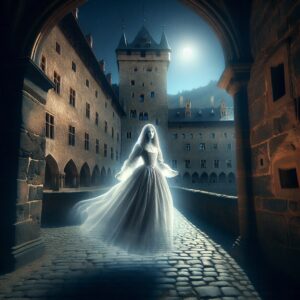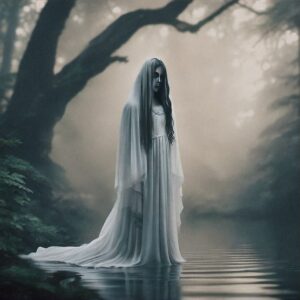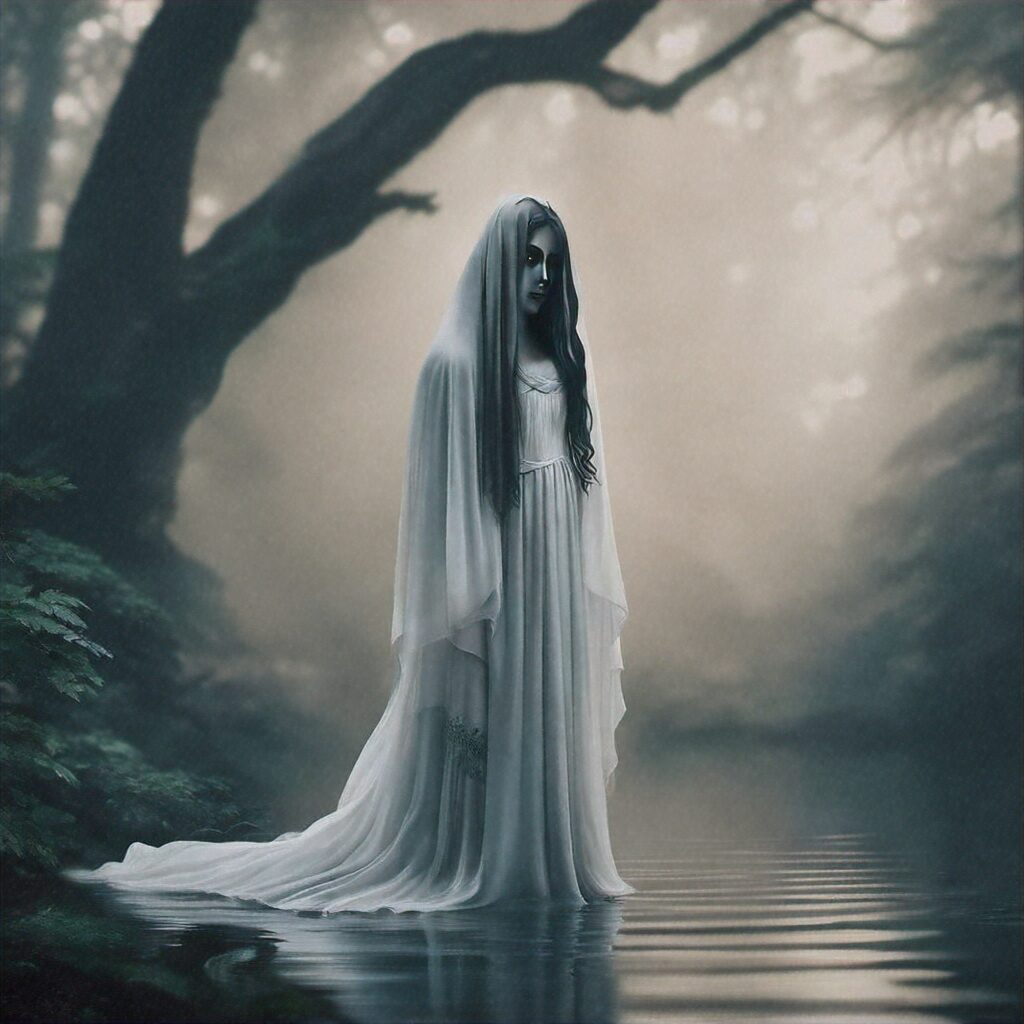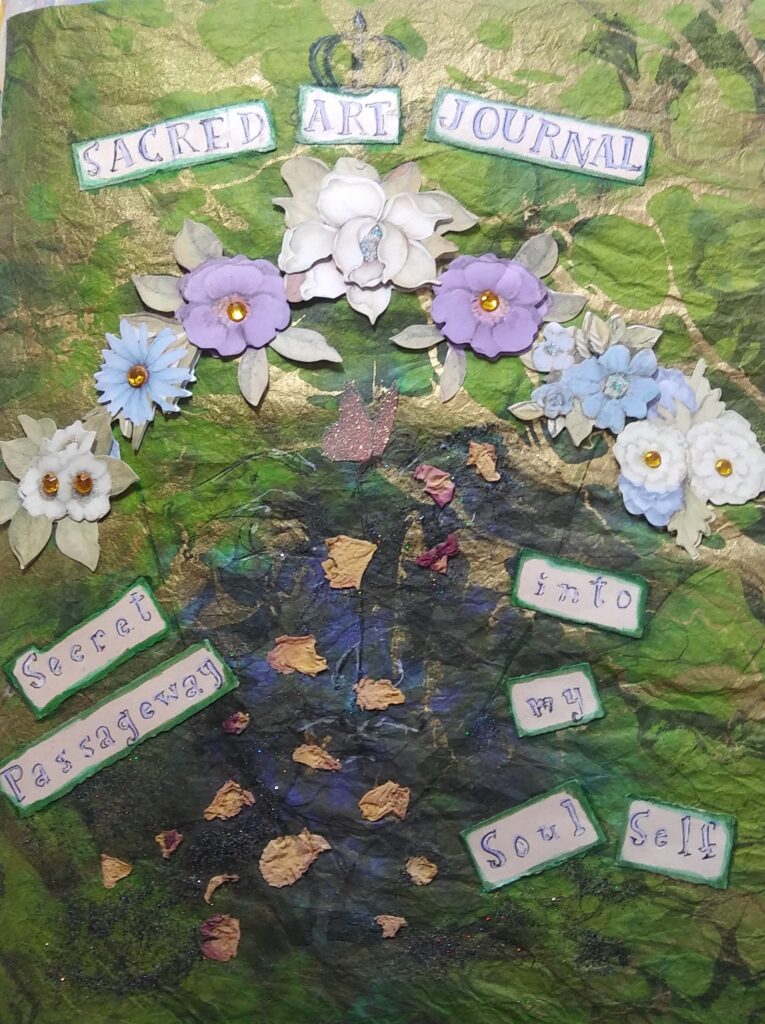 The real ghostly spirit of Halloween is the mysterious yet ubiquitous “White Lady” of lore. She floats through various Celtic cultural tales of Samhain and Halloween as a shapeshifter who hovers over the surface of the water or lies in wait in apple orchards. She’s a faery, a protector, a victim, a seductress, and sometimes even a kidnapper. She “makes appearances” like the Virgin Mary – when most needed and least expected. Who is she? What is she trying to tell us?
The real ghostly spirit of Halloween is the mysterious yet ubiquitous “White Lady” of lore. She floats through various Celtic cultural tales of Samhain and Halloween as a shapeshifter who hovers over the surface of the water or lies in wait in apple orchards. She’s a faery, a protector, a victim, a seductress, and sometimes even a kidnapper. She “makes appearances” like the Virgin Mary – when most needed and least expected. Who is she? What is she trying to tell us?
In the British Isles she was known as Lady Gwyn (or Wen), who in some stories was a harmless lost soul, while in others she was a headless evil conjurer, who was always accompanied by the devil in the form of a black sow. In South Wales men and boys dressed as her in sheepskin, ragged clothes, and masks, and sang to summon her from the apple orchards where she hid with her pigs. In Scottland, during the Sawain hunt, when the faery mounds were opened and spirits traversed the thin veil between the worlds, she was seen floating among the hunted woodland spirits and the souls of unbaptized children. The Irish White Lady of Kinsale was a mourning bride who wandered through the fort where her husband died and is visible only by children. She can sometimes be seen standing over their cradles. Sir Walter Scott immortalized The White Lady of Avenir as the spirit who consoled and guarded his young heroine in The Monastery.
These are but a few of the circumstances within which the White Lady submerges from Halloween lore and haunts our imaginations. But when we survey the patterns within these accounts, some interesting revelations come to light: In the first place, her role and character is wildly ambivalent. This is not surprising, because as the Spirit of Halloween, she embodies the uncanny joining together of the stark opposites of life that are most evident at this time of year – the shift from fruitfulness and harvest to the dark, barren, death of winter. In all, she symbolizes the rising of our most brilliant “aha” realizations and our greatest fears from the depths of our consciousness. What we have repressed, she squarely confronts us with, when she subtly and suddenly “appears.”
winter. In all, she symbolizes the rising of our most brilliant “aha” realizations and our greatest fears from the depths of our consciousness. What we have repressed, she squarely confronts us with, when she subtly and suddenly “appears.”
The roots of the La Llorona of Mexican legend, who drowns her own children, then wanders over the water at night repenting and waiting for them are easy to see within the ancient Celtic myths of the White Lady. She is the dreadful mother, who “brought you into this world and can take you out again.” She is the truth about life that must be faced – that we are the children born from the waters of her womb, the apple blossoms that delight the orchards, the harvest that is ripened and plucked, before she eventually takes our rotted bodies back into herself.
Though she provides fruitfulness in her flowery aspects, she is also Lilith from rabbinical literature, who seduces men and abducts children. She is Pamona, the Greek Goddess of abundance, who carries a bounty of fruits and flowers. The White Lady is Hekate, the  Greek Goddess psychopomp who stands at the crossroads and guides us through the transitions of life. She is Cerridwen, the Welsh Goddess of the cauldron, of cronedom, motherhood, poetry, and rebirth.
Greek Goddess psychopomp who stands at the crossroads and guides us through the transitions of life. She is Cerridwen, the Welsh Goddess of the cauldron, of cronedom, motherhood, poetry, and rebirth.
The White Lady became “nameless” within the patriarchal lore that superseded the ancient Goddess traditions of these lands. Her powers were diminished and demonized, as we see her becoming more and more wretched, wicked, and “witchy” as these stories progress.
However, her life regenerative characteristics cannot be denied. Nor can the fact that she will always continue to “make appearances” from the depths of our consciousness as we continue to grapple with the realities of life – especially on nights like Halloween, when the veil between life and death is so thin, we can pass right through it.
References
Kelley, A.M. R. E. (1919) The Book of Hallowe’en: The Origin and History of Halloween. Columbia: Ruth Edna Kelley.
Koltov, B.B. (1986) The Book of Lilith. York Beach, ME: Nicolas-Hays, Inc,
Llewellyn Classic (2019) Samhain, Woodbury, MN: Llewellyn Publications.
Von Rudloff, R. (1999) Hekate in Ancient Greek Religion. Victoria B.C.: Horned Owl Publishing.






